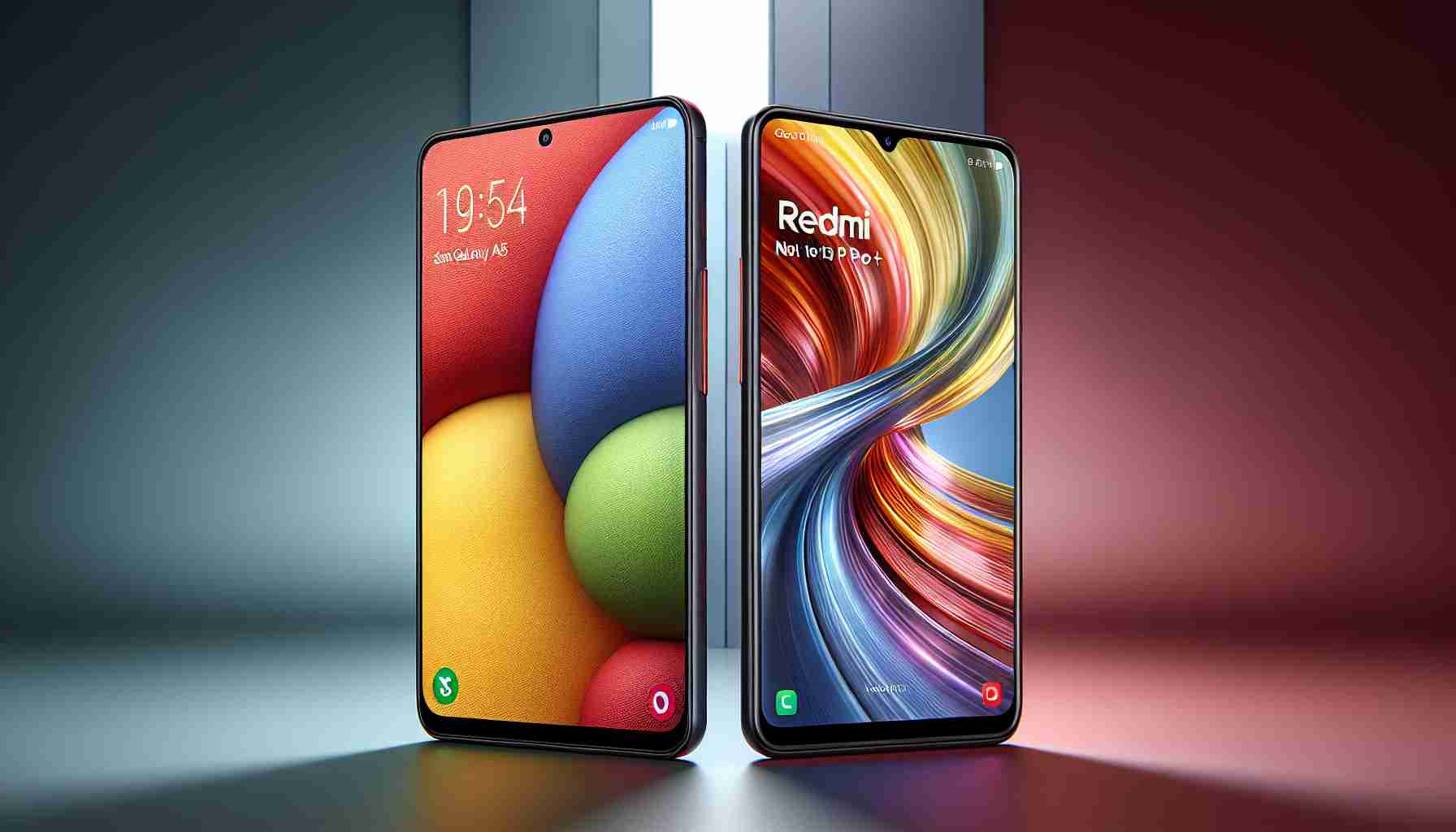In the competitive world of smartphones, a new rivalry emerges as the Samsung Galaxy A55, anticipated to be a top-seller like its predecessors, encounters a formidable opponent in Xiaomi’s Redmi Note 13 Pro+. The loyal customer base, familiar with Samsung’s reputation for quality, often opts for Galaxy A series devices due to their retail presence and balanced features like water resistance, quality cameras, and solid performance.
However, Xiaomi’s Redmi Note 13 Pro+ is redefining value for money, matching the Galaxy A55’s price point while offering a suite of enhanced features. The Redmi’s display outshines the Galaxy with its higher brightness (1800 nits at its peak) and the absence of thick bezels, which have been a criticism of the A55. Xiaomi’s device also boasts an impressively fast charging capability, reaching a full charge in about 20 minutes with its 120-watt adapter compared to the Galaxy’s hour and a half charge time, with the Galaxy requiring an additional purchase for its 25-watt block.
In terms of durability, the Redmi Note 13 Pro+ surpasses the A55 with its superior IP68 water and dust resistance rating, allowing it to survive submersion up to 1.5 meters deep. While both devices are on par with performance and battery life, the Redmi subtly edges out with its camera capabilities, barring 4K recording only on its front camera.
When it comes to storage, the base model of the Galaxy A55 at 8/128 GB is priced similarly to the Redmi, which offers a surprising 256 GB in its base version. Our analysis suggests that until the Galaxy A55 sees a price reduction, the Xiaomi Redmi Note 13 Pro+ stands as the smarter purchase, offering a slew of unexpected advantages for the same investment.
Important Questions and Answers:
1. Why is the Xiaomi Redmi Note 13 Pro+ considered to be in stiff competition with the Samsung Galaxy A55?
The Redmi Note 13 Pro+ competes aggressively with the Galaxy A55 by offering enhanced features at a similar price point. It includes upgrades such as a higher brightness display, faster charging, better water and dust resistance, and a larger base storage option, which elevates its value proposition for consumers.
2. What are the key strengths of the Samsung Galaxy A series which might retain customers despite the competition?
The Samsung Galaxy A series, including the A55, are known for their balanced features and Samsung’s reputation for quality. Factors such as retail presence, water resistance, quality cameras, and solid performance, along with brand loyalty, might keep consumers within the Samsung ecosystem.
3. What challenges does Samsung face with the introduction of the Redmi Note 13 Pro+?
The main challenge is that Samsung needs to justify the A55’s value against the aggressive features-to-price ratio of the Redmi Note 13 Pro+. This might require them to either introduce a price cut, offer additional features, or leverage their brand reputation and customer service to maintain market share.
Key Challenges and Controversies:
– Competitive Pricing: With Xiaomi offering high-end features at mid-range prices, Samsung’s Galaxy A55 faces the challenge of competing on value.
– Feature Parity: Ensuring that their mid-range models keep up with the rapidly advancing features of competitors is a constant struggle for established brands like Samsung.
– Brand Perception: Despite the feature-rich offerings from competitors, Samsung might still retain certain customers due to brand perception and loyalty.
Advantages and Disadvantages:
Advantages of Xiaomi Redmi Note 13 Pro+:
– More storage in the base model (256GB).
– Superior display brightness at 1800 nits and better bezel management.
– IP68 water and dust resistance, providing more durability.
– Exceptionally fast 120-watt charging capability.
Disadvantages of Xiaomi Redmi Note 13 Pro+:
– The brand might not have as extensive a retail presence or customer service network as Samsung.
– Some users may prefer the One UI of Samsung over MIUI from Xiaomi, which can be a matter of personal preference and existing ecosystem integration.
Advantages of Samsung Galaxy A55:
– Samsung brand reputation for quality and reliability.
– Solid overall performance with a focus on balance in features.
– Established retail presence and likely better customer service options.
Disadvantages of Samsung Galaxy A55:
– Slower charging, especially since a separate purchase of a 25-watt block is required.
– Lower base storage option in comparison to the Redmi Note 13 Pro+.
– Bezel size and water-resistance rating might not match up to Redmi Note 13 Pro+.
To further research smartphones, you can visit Samsung Official Site or Xiaomi Official Site. These links will provide you with detailed information on their latest offerings, enabling you to make an informed decision.
The source of the article is from the blog publicsectortravel.org.uk
